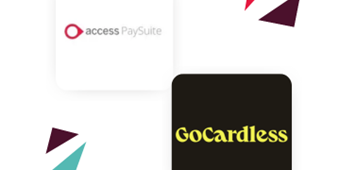In the dynamic landscape of modern enterprise operations, the significance of scalable payment solutions cannot be overstated, particularly in the realm of recurring payments. By embracing recurring payments, businesses can streamline operations, enhance scalability, and optimise the customer experience, thereby reinforcing their long-term strategic objectives and gaining a competitive edge in the market.
As businesses expand their reach, diversify their offerings, and cater to an increasingly digital-savvy customer base, the need for efficient, adaptable payment structures becomes paramount. Scalable payment solutions offer a strategic advantage, enabling enterprises to seamlessly manage recurring transactions while accommodating growth, mitigating risks, and enhancing overall operational agility.
In this era of subscription-based models, SaaS (Software as a Service) platforms, and membership economies, harnessing the power of scalable payment solutions is not just a matter of convenience—it's a strategic imperative for sustained success and competitiveness.
In this guide explores the crucial role of scalable payment solutions in enhancing efficiency, flexibility, and innovation within enterprise operations, with a specific focus on their importance in managing recurring payments.
A recurring payment is a billing option where customers agree to make regular, ongoing payments for products or services, which are then taken automatically on a set schedule. The payment might be for the same amount each time, such as for a gym membership or subscription to a streaming service, or they might change based on usage, such as when paying for utilities.
They’re handy for customers because they don’t have to worry about remembering to pay manually, reducing the chance of the service being cut off. For businesses, recurring payments help to maintain a steady income while reducing administrative tasks like chasing late payments.
Embracing recurring payments isn't just about convenience—it's about empowering your business to thrive in a dynamic market. Here's why:
Recurring payments prove invaluable for enterprises operating under continuous service or subscription-based models. These encompass a diverse array of industries, including telecommunications, banking, software as a service (SaaS), insurance, utilities, fitness, nonprofit organisations, and rental services. Essentially, any business offering products or services on a recurring basis can reap the rewards of integrating recurring payment systems.
Such systems facilitate revenue management optimisation and elevate customer satisfaction levels. They establish stable, predictable income streams for businesses, reducing reliance on sporadic transactions and buffering against revenue fluctuations. This stability not only fosters innovation within enterprises but also empowers them to expand into new markets and navigate economic uncertainties with resilience.
Efficiently managing recurring payments is pivotal for the seamless operation of mid to enterprise-sized businesses. To ensure streamlined transactions with your customers, it's essential to integrate robust payment processing solutions into your existing systems. Here's a comprehensive look at advanced integration methods tailored to meet the demands of your enterprise:
By integrating payment processing seamlessly into your existing enterprise systems, you can unlock operational efficiencies, enhance customer experiences, and drive sustainable growth for your business. Embrace advanced integration methods and robust API-driven solutions to stay ahead in today's dynamic business landscape.
Integrating recurring payments into your business operations can yield significant benefits, fostering a consistent revenue stream and enhancing customer satisfaction. However, before embarking on this path, it's crucial to navigate several key considerations tailored to the needs of mid to enterprise-sized businesses.
Evaluate whether recurring payments align with your business model. Typically, enterprises offering long-term contracts, subscriptions, memberships, or ongoing services stand to gain the most from this payment model.
Prioritise understanding your customers' payment preferences. Analyse past transactions or conduct surveys to determine whether weekly, monthly, or yearly recurring payments would resonate best with your clientele.
Delve into the various pricing models offered by payment providers supporting recurring payments. Whether flat rates or transaction-based fees, ensure alignment with your market and business model, while remaining vigilant for hidden costs.
Compliance with legal and financial regulations is paramount. Ensure adherence to industry-specific standards such as the Payment Card Industry Data Security Standard (PCI DSS), and meticulously communicate the terms and conditions of recurring payments to your customers.
Choose a payment gateway that not only offers robust security features but also facilitates management of failed payments and provides tools for sending payment reminders. This ensures optimal benefits for your business and enhances customer experience.
Establish a clear protocol for handling failed payments, including automated retries, customer notifications, or service pausing until payment resolution. These measures are vital for maintaining healthy cash flow and customer satisfaction.
Offer seamless customer support channels to address inquiries or concerns promptly. Well-trained support teams can enhance the buying experience, boost sales, and foster long-term customer loyalty.
Ensure compliance with industry-specific regulations such as GDPR for data protection. Additionally, address concerns related to scalability by assessing the system's capacity to handle high transaction volumes and accommodate business growth without interruptions.
Setting up recurring payments for your customers, regardless of the payment processor you choose, follows a standard process. Here's a breakdown of the key steps involved:
Before diving into implementation, it's crucial to choose the right payment processor for your business. Take the time to research various options, considering factors like reliability, scalability, and security certifications. Refer to our guide on selecting the best payment service provider for detailed insights.
For mid to enterprise-sized businesses, implementing recurring payment solutions requires meticulous project management. Key considerations include stakeholder alignment, change management strategies, and thorough user acceptance testing. Ensuring alignment across departments and teams, managing changes effectively, and validating user acceptance are critical for a successful implementation.
Whether you're integrating a new payment solution or enhancing an existing one, ensure a seamless setup process. Most payment providers offer integration support and training to facilitate smooth implementation. This minimises disruptions for your business and enhances the customer experience.
Once the recurring payment plan is selected by the customer, they'll input their payment details and authorise ongoing charges. Their information will be securely stored in your chosen payment processor, enabling automatic billing at each payment cycle.
By following these steps and considering the project management and vendor selection criteria outlined, you can establish a robust recurring payment system tailored to the needs of your enterprise.
In conclusion, implementing recurring payments is not merely about convenience; it's a strategic move that can significantly benefit enterprise businesses in various ways.
Elevate your business with our enterprise-focused approach to recurring payments. Contact us today to explore how we can meet your unique requirements and address your concerns with precision and expertise.

In payment card transactions, understanding the roles of card issuers and acquirers is crucial. In this article, we will delve deep into the nuances of the card acquirer and card issuer and clarify their roles and responsibilities.
Read now
In the world of financial technology, choosing the right payment processing solution is crucial for your business. In this blog we compare Access PaySuite and GoCardless to help you make an informed decision that best fits your needs.
Read now
In this blog, we will delve into the world of Open Banking, how it works, and the benefits it offers. We’ll also explore the challenges it poses, and how this new banking technology will continue to develop in the future and explore how this transformative approach can benefit businesses.
Read now